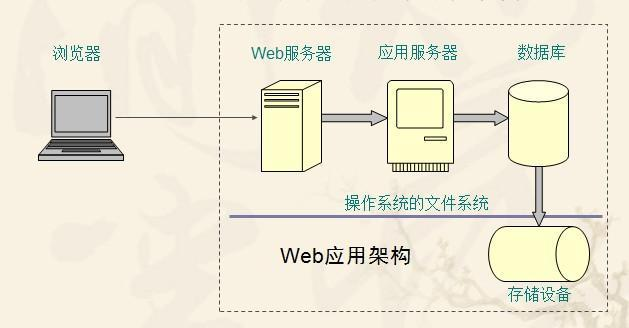图片如有雷同,那一定是缘分

概念:
所谓缓存,就是将程序或系统经常要调用的对象存在内存中,以便再次使用时可以快速调用,不必再去创建新的重复的实例。这样做可以减少系统开销,提高系统效率。
缓存主要可分为二大类:
一、通过文件缓存,顾名思义文件缓存是指把数据存储在磁盘上,不管你是以XML格式,序列化文件DAT格式还是其它文件格式;
二、内存缓存,也就是实现一个类中静态Map,对这个Map进行常规的增删查.
class一:
package com.yin.cache; import java.util.ArrayList; import java.util.HashMap; import java.util.Iterator; /** * @Explain * @author yinyl * @version 2017-3-9 上午9:33:59 * Description: 管理缓存 * 可扩展的功能:当chche到内存溢出时必须清除掉最早期的一些缓存对象, * 这就要求对每个缓存对象保存创建时间 */ public class CacheManager { private static HashMap cacheMap = new HashMap(); //单实例构造方法 private CacheManager() { super(); } //获取布尔值的缓存 public static boolean getSimpleFlag(String key){ try{ return (Boolean) cacheMap.get(key); }catch(NullPointerException e){ return false; } } public static long getServerStartdt(String key){ try { return (Long)cacheMap.get(key); } catch (Exception ex) { return 0; } } //设置布尔值的缓存 public synchronized static boolean setSimpleFlag(String key,boolean flag){ if (flag && getSimpleFlag(key)) {//假如为真不允许被覆盖 return false; }else{ cacheMap.put(key, flag); return true; } } public synchronized static boolean setSimpleFlag(String key,long serverbegrundt){ if (cacheMap.get(key) == null) { cacheMap.put(key,serverbegrundt); return true; }else{ return false; } } //得到缓存。同步静态方法 private synchronized static Cache getCache(String key) { return (Cache) cacheMap.get(key); } //判断是否存在一个缓存 private synchronized static boolean hasCache(String key) { return cacheMap.containsKey(key); } //清除所有缓存 public synchronized static void clearAll() { cacheMap.clear(); } //清除某一类特定缓存,通过遍历HASHMAP下的所有对象,来判断它的KEY与传入的TYPE是否匹配 public synchronized static void clearAll(String type) { Iterator i = cacheMap.entrySet().iterator(); String key; ArrayList arr = new ArrayList(); try { while (i.hasNext()) { java.util.Map.Entry entry = (java.util.Map.Entry) i.next(); key = (String) entry.getKey(); if (key.startsWith(type)) { //如果匹配则删除掉 arr.add(key); } } for (int k = 0; k < arr.size(); k++) { clearOnly((String) arr.get(k)); } } catch (Exception ex) { ex.printStackTrace(); } } //清除指定的缓存 public synchronized static void clearOnly(String key) { cacheMap.remove(key); } //载入缓存 public synchronized static void putCache(String key, Cache obj) { cacheMap.put(key, obj); } //获取缓存信息 public static Cache getCacheInfo(String key) { if (hasCache(key)) { Cache cache = getCache(key); if (cacheExpired(cache)) { //调用判断是否终止方法 cache.setExpired(true); } return cache; }else return null; } //载入缓存信息 public static void putCacheInfo(String key, Cache obj, long dt,boolean expired) { Cache cache = new Cache(); cache.setKey(key); cache.setTimeOut(dt + System.currentTimeMillis()); //设置多久后更新缓存 cache.setValue(obj); cache.setExpired(expired); //缓存默认载入时,终止状态为FALSE cacheMap.put(key, cache); } //重写载入缓存信息方法 public static void putCacheInfo(String key,Cache obj,long dt){ Cache cache = new Cache(); cache.setKey(key); cache.setTimeOut(dt+System.currentTimeMillis()); cache.setValue(obj); cache.setExpired(false); cacheMap.put(key,cache); } //判断缓存是否终止 public static boolean cacheExpired(Cache cache) { if (null == cache) { //传入的缓存不存在 return false; } long nowDt = System.currentTimeMillis(); //系统当前的毫秒数 long cacheDt = cache.getTimeOut(); //缓存内的过期毫秒数 if (cacheDt <= 0||cacheDt > nowDt) { //过期时间小于等于零时,或者过期时间大于当前时间时,则为FALSE return false; } else { //大于过期时间 即过期 return true; } } //获取缓存中的大小 public static int getCacheSize() { return cacheMap.size(); } //获取指定的类型的大小 public static int getCacheSize(String type) { int k = 0; Iterator i = cacheMap.entrySet().iterator(); String key; try { while (i.hasNext()) { java.util.Map.Entry entry = (java.util.Map.Entry) i.next(); key = (String) entry.getKey(); if (key.indexOf(type) != -1) { //如果匹配则删除掉 k++; } } } catch (Exception ex) { ex.printStackTrace(); } return k; } //获取缓存对象中的所有键值名称 public static ArrayList getCacheAllkey() { ArrayList a = new ArrayList(); try { Iterator i = cacheMap.entrySet().iterator(); while (i.hasNext()) { java.util.Map.Entry entry = (java.util.Map.Entry) i.next(); a.add((String) entry.getKey()); } } catch (Exception ex) {} finally { return a; } } //获取缓存对象中指定类型 的键值名称 public static ArrayList getCacheListkey(String type) { ArrayList a = new ArrayList(); String key; try { Iterator i = cacheMap.entrySet().iterator(); while (i.hasNext()) { java.util.Map.Entry entry = (java.util.Map.Entry) i.next(); key = (String) entry.getKey(); if (key.indexOf(type) != -1) { a.add(key); } } } catch (Exception ex) {} finally { return a; } } }
class二:
package com.yin.cache; /** * * @Explain * @author yinyl * @version 2017-3-9 上午9:34:40 * */ public class Cache { private String key;//缓存ID private Object value;//缓存数据 private long timeOut;//更新时间 private boolean expired; //是否终止 public Cache() { super(); } public Cache(String key, Object value, long timeOut, boolean expired) { this.key = key; this.value = value; this.timeOut = timeOut; this.expired = expired; } public String getKey() { return key; } public long getTimeOut() { return timeOut; } public Object getValue() { return value; } public void setKey(String string) { key = string; } public void setTimeOut(long l) { timeOut = l; } public void setValue(Object object) { value = object; } public boolean isExpired() { return expired; } public void setExpired(boolean b) { expired = b; } }
class三:
package com.yin.cache; /** * * @Explain * @author yinyl * @version 2017-3-9 上午9:35:06 * */ public class TestCache { /** * @param args */ public static void main(String[] args) { System.out.println(CacheManager.getSimpleFlag("yinyanling is a beautiful girl")); CacheManager.putCache("abc", new Cache()); CacheManager.putCache("def", new Cache()); CacheManager.putCache("ccc", new Cache()); CacheManager.clearOnly(""); Cache c = new Cache(); for (int i = 0; i < 10; i++) { CacheManager.putCache("" + i, c); } CacheManager.putCache("aaaaaaaa", c); CacheManager.putCache("abchcy;alskd", c); CacheManager.putCache("cccccccc", c); CacheManager.putCache("abcoqiwhcy", c); System.out.println("删除前的大小:"+CacheManager.getCacheSize()); CacheManager.getCacheAllkey(); CacheManager.clearAll("aaaa"); System.out.println("删除后的大小:"+CacheManager.getCacheSize()); CacheManager.getCacheAllkey(); } }